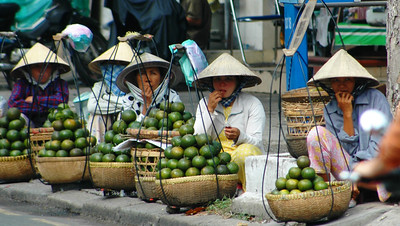In fruit ripening seasons, travelers in China will encounter a very common sight along expressways. A dozen or so fruit vendors will congregate in one chosen spot selling identical fruit from identical-looking baskets.
There are usually no posted prices, but when you ask they quote identical prices. And they would not budge on the prices.

Several economic questions come to mind.
First, is there explicit or tacit price collusion? Whether there is or not, why donít some of them under-sell the others as predicted by textbook cartel theory?
The answer is quite obvious. Their close proximity to each other makes explicit price collusion unnecessary. The quoted price is within earshot of the other vendors. Any attempt at under-selling is also instantly broadcast to their fellow vendors. The fear of ostracism is enough for them to toe the prevailing price; however it is arrived at in the first place. It is quite possible the vendors know each other or may even be neighbors from the same village. Tacit or explicit price collusion is easy to set up.
Second, what is the point of selling identical products right next to each other?
Stand-alone vendors usually have more room for price discrimination because there are no nearby competitors to compare prices with. But on expressways where cars do not frequently stop to shop, congregated vendors are more likely to induce the drivers to stop for road-side bargains. In effect, there is trade-off between higher profit and higher sales.
Third, with identical products and identical prices on offer, how do the customers decide which vendors to buy from?
The buying decision could be a random process. Or the decision could be triggered by some specific reasons. For example, more sales could be closed for vendors at the head of the line if there are fewer customers than vendors. Or the vendor might stand out from the crowd because of her age, appearance, or dress.
Congregated vendors selling identical products charging identical prices are a classic case of perfect competition. There are no entry or exit barriers and individual sellers are powerless to raise or lower their prices. Since price must be equal to average cost and marginal cost, economic profit is zero.
Where foot traffic is high, fruit vendors prefer to stand alone where they can exercise more pricing power. And they can change their locations quite easily if they carry their merchandise with a bamboo pole, or on a wheeled vehicle. In other words, they can transform themselves from a perfect competitor into a monopolistic competitor depending on the traffic pattern of their potential customers.
